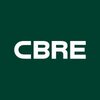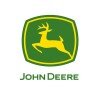

Bses Rajdhani Power




20+ Bses Rajdhani Power Interview Questions and Answers
Q1. What is basic difference between current and voltage
Current is the flow of electric charge, while voltage is the force that drives the current.
Current is the rate of flow of electric charge through a conductor.
Voltage is the difference in electric potential between two points in a circuit.
Current is measured in Amperes (A), while voltage is measured in Volts (V).
Ohm's Law relates current, voltage, and resistance in a circuit: V = I * R.
In a simple analogy, current is like the flow of water in a pipe, while voltage is like the ...read more

Q2. In distribution transformer how many earthing required to a healthy system.
At least two earthing connections are required for a healthy distribution transformer system.
Distribution transformers require earthing to ensure safety and proper functioning.
At least two earthing connections are necessary to create a low-resistance path for fault currents.
One earthing connection is typically made to the transformer tank, while the other is connected to the neutral point of the transformer winding.
Earthing helps in dissipating fault currents, preventing dama...read more

Q3. In 11kv distribution system, what voltage between phase to earth.
The voltage between phase to earth in a 11kv distribution system is typically 6.6kV.
In a 11kv distribution system, the voltage between phase to earth is usually 6.6kV.
This voltage is commonly used in medium voltage power distribution networks.
It is important to maintain proper insulation and grounding to ensure safety and reliability.
The voltage between phase to earth can vary depending on the specific system design and requirements.
For example, in some cases, it may be 3.3kV...read more

Q4. What is the earthing used
Earthing is used in electrical systems to protect against electric shock and ensure proper functioning of equipment.
Earthing is used to provide a path for fault currents to flow safely to the ground.
It helps to stabilize voltage levels and prevent damage to equipment.
Different types of earthing systems include TN, TT, and IT systems.
Examples of earthing methods include rod earthing, plate earthing, and pipe earthing.

Q5. What is electricity
Electricity is the flow of electric charge through a conductor.
Electricity is a form of energy resulting from the existence of charged particles (such as electrons or protons).
It can be generated by various means such as chemical reactions, electromagnetic induction, or solar panels.
Electricity can be harnessed to power various devices and systems, from light bulbs to computers.
It is essential for modern society, enabling communication, transportation, and countless other fun...read more

Q6. What is voltage
Voltage is the difference in electric potential between two points in a circuit, measured in volts.
Voltage is the driving force that pushes electric current through a circuit
It is measured in volts (V)
Voltage can be positive or negative, depending on the direction of current flow
Higher voltage means more potential energy available to move electrons
Examples: A battery provides voltage to power a flashlight, a wall outlet provides voltage to charge a phone

Q7. What is circuit
A circuit is a closed loop through which an electric current can flow.
A circuit consists of components such as resistors, capacitors, inductors, and power sources.
There are two types of circuits: series circuits (components connected in a single path) and parallel circuits (components connected in multiple paths).
Circuits can be used to perform various functions such as amplification, filtering, and signal processing.
Examples of circuits include simple LED circuits, audio amp...read more

Q8. How oracle fetch data when you hits select statements.
Oracle fetches data using the SQL engine and the buffer cache.
When a select statement is executed, the SQL engine parses the statement and creates an execution plan.
The execution plan is used to fetch data from the database.
The buffer cache is used to store frequently accessed data in memory for faster access.
Oracle uses a multiversion read consistency model to ensure that data is consistent.
Data is fetched in blocks called database blocks, which are stored on disk.
Oracle use...read more


Q9. Are you satisfied in minimum wages ten thousand seven hundred
No, I am not satisfied with minimum wages of ten thousand seven hundred.
Minimum wages of ten thousand seven hundred may not be sufficient to meet my financial needs.
I may be looking for better compensation based on my skills and experience.
I would prefer a salary that reflects the value I bring to the organization.

Q10. What types of losses occurs while distribution of power ?
Types of losses in power distribution include resistance losses, core losses, and dielectric losses.
Resistance losses occur due to the resistance of the conductors, leading to heat dissipation.
Core losses occur in transformers due to hysteresis and eddy current losses.
Dielectric losses occur in insulating materials due to polarization and leakage currents.

Q11. Tell me the types of relay which used for the protection of feeder.
Different types of relays are used for the protection of feeder.
Overcurrent relay
Earth fault relay
Differential relay
Distance relay
Directional relay

Q12. What is power factor ? What is meggar ? Type of meter ? What is unit ? Power factor related Questions ?
Power factor is a measure of how effectively electrical power is being used. A meggar is a type of insulation resistance tester. Different types of meters include analog and digital meters.
Power factor is the ratio of real power to apparent power in an electrical system.
A meggar is used to measure the insulation resistance of electrical equipment.
Types of meters include analog meters, digital meters, and smart meters.
Unit refers to the standard measurement used for a particul...read more

Q13. Explain about the power distribution system using line diagram?
Power distribution system is a network of electrical components used to deliver electricity from the generation source to the end users.
Power generation at a central location
Transmission of electricity through high voltage lines
Distribution through substations and transformers
Delivery to end users via distribution lines
Utilization by consumers for various applications

Q14. Tell me about the type of transformer testing.
Transformer testing includes routine, type, and special tests to ensure proper functioning.
Routine tests include measurement of winding resistance, voltage ratio, and insulation resistance.
Type tests include temperature rise, impulse voltage, and short circuit tests.
Special tests may include noise level, partial discharge, and harmonic distortion tests.
Testing is important to ensure safety, reliability, and efficiency of transformers.
Results of testing can be used to diagnose...read more

Q15. what is ELCB ,explain its working
ELCB stands for Earth Leakage Circuit Breaker. It is a safety device that automatically switches off the electrical circuit when it detects current leakage.
ELCB is also known as RCCB (Residual Current Circuit Breaker).
It works by comparing the incoming and outgoing current in a circuit.
If there is a difference in current, it means that some current is leaking to the earth, and the ELCB trips the circuit.
ELCB is used to protect against electric shock and fire hazards.
It is com...read more

Q16. Type of circuit breaker
There are three main types of circuit breakers: thermal, magnetic, and thermal-magnetic.
Thermal circuit breakers use a bimetallic strip to break the circuit when it overheats.
Magnetic circuit breakers use a solenoid to trip the circuit when it detects a sudden surge of current.
Thermal-magnetic circuit breakers combine the features of both thermal and magnetic circuit breakers for better protection.
Examples include Square D, Siemens, and Eaton circuit breakers.

Q17. What is difference between inbound and outbound
Inbound refers to receiving calls, while outbound refers to making calls.
Inbound calls are received by the customer care executive, while outbound calls are made by the executive.
Inbound calls are usually from customers seeking assistance or information, while outbound calls are made for sales or follow-ups.
Inbound calls are reactive in nature, while outbound calls are proactive.
Examples: Inbound - customer calling a helpline for support. Outbound - executive calling customer...read more

Q18. Type of transformer
Transformers are electrical devices that transfer electrical energy between two or more circuits through electromagnetic induction.
Transformers can be classified based on their construction (core type, shell type), cooling method (oil-immersed, dry-type), and application (power, distribution, instrument, etc.)
Examples of transformers include power transformers used in electrical substations, distribution transformers on utility poles, and instrument transformers for measuring...read more

Q19. How to resolve customer queries
Resolve customer queries by actively listening, empathizing, providing solutions, and following up.
Listen actively to understand the customer's issue
Empathize with the customer's frustration or concerns
Provide clear and concise solutions or options
Follow up to ensure the issue is resolved to the customer's satisfaction

Q20. what are DERC guidelines
DERC guidelines are regulations set by the Delhi Electricity Regulatory Commission for the power sector in Delhi.
DERC guidelines regulate the power sector in Delhi
They cover areas such as tariff determination, grid connectivity, and power purchase agreements
The guidelines aim to ensure fair and transparent practices in the power sector
DERC guidelines are regularly updated to keep up with changing industry trends and technologies

Q21. What is transformer ?

Q22. carear objective
To utilize my skills and experience in electrical supervision to ensure efficient operations and safety in the workplace.
Seeking to lead a team of electricians to complete projects on time and within budget
Implementing and enforcing safety protocols to prevent accidents and injuries
Continuously improving processes and procedures to enhance productivity
Training and mentoring junior staff to develop their skills and knowledge
Maintaining compliance with electrical codes and regu...read more

Q23. What is meter ?
Meter is a unit of length in the metric system, equal to 100 centimeters or approximately 39.37 inches.
Meter is the base unit of length in the metric system.
It is equal to 100 centimeters or approximately 39.37 inches.
Commonly used for measuring distances, heights, and lengths.
Examples: A standard ruler is typically marked in centimeters and meters.
Example: The height of a person can be measured in meters.

Q24. Types of transformer
Types of transformers include power transformers, distribution transformers, autotransformers, isolation transformers, and instrument transformers.
Power transformers are used in high voltage transmission systems to step up or step down voltage levels.
Distribution transformers are used to supply power to residential and commercial areas.
Autotransformers have a single winding and are used for voltage regulation.
Isolation transformers are used to provide electrical isolation bet...read more

Q25. What is fuse.





Top HR Questions asked in Bses Rajdhani Power
Interview Process at Bses Rajdhani Power

Top Interview Questions from Similar Companies









Reviews
Interviews
Salaries
Users/Month












